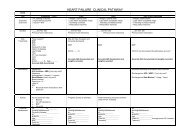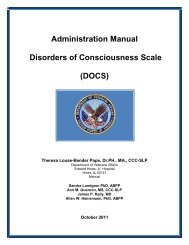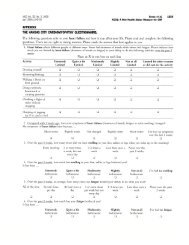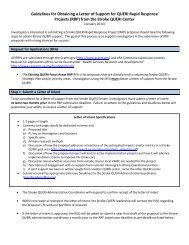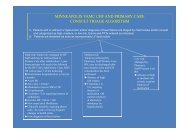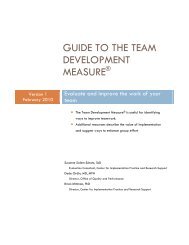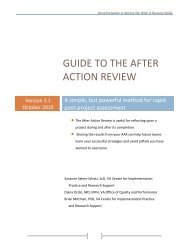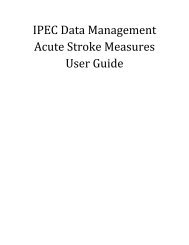The Veteran Supported Education Service Treatment Manual: VetSEd
The Veteran Supported Education Service Treatment Manual: VetSEd
The Veteran Supported Education Service Treatment Manual: VetSEd
Create successful ePaper yourself
Turn your PDF publications into a flip-book with our unique Google optimized e-Paper software.
solving attitude. ―I am hopeful the problem solving worksheet will help at least<br />
somewhat.‖ This is not meant to be a perfunctory task and the peer <strong>VetSEd</strong> provider<br />
might help the <strong>Veteran</strong> by having him/her review other times when s/he has<br />
successfully addressed a problem.<br />
D. Knowing Your Population: Serving Returning <strong>Veteran</strong>s with Trauma and<br />
Post-Traumatic Stress Disorder (PTSD), Traumatic Brain Injury (TBI), Cooccurring<br />
Mental Illness and Substance Use<br />
<strong>Veteran</strong>s, especially those <strong>Veteran</strong>s returning from the recent OIF/OEF/OND conflicts,<br />
have a great deal of interest in pursuing their educational goals. However, among the<br />
influx of returning <strong>Veteran</strong>s, several barriers stand in the way of these <strong>Veteran</strong>s achieving<br />
their educational goals. For example, <strong>Veteran</strong>s, especially those with mental health<br />
conditions such as depression, anxiety, PTSD, and/or traumatic brain injury who also<br />
have a co-occurring substance abuse problem, face great challenges in achieving their<br />
educational goals compared to <strong>Veteran</strong>s without such diagnoses. When you are working<br />
with a <strong>Veteran</strong>, it is valuable to understand the type of mental health condition s/he has.<br />
<strong>The</strong> type of condition may have a great deal to do with the kinds of behaviors you are<br />
seeing. Below we discuss common mental health experienced by returning <strong>Veteran</strong>s, how<br />
these conditions may affect their pursuit of educational goals, as well as, potential<br />
resources you can consider to assist <strong>Veteran</strong>s in overcoming barriers posed by these<br />
conditions.<br />
i. Knowing your Population: Understanding and Serving <strong>Veteran</strong>s with<br />
Trauma and PTSD<br />
Many of the <strong>Veteran</strong>s you work with in <strong>VetSEd</strong> will have lived experience with trauma.<br />
―Trauma‖ broadly refers to the experience, threat, or witnessing of physical harm<br />
(American Psychiatric Association, 1994). <strong>Veteran</strong>s enrolled in <strong>VetSEd</strong> may have<br />
experienced trauma in military combat, terrorist or IED attacks, serious car accidents,<br />
natural disasters, major medical illnesses and injuries, and/or military and/or childhood<br />
physical or sexual abuse, assault, and violence. <strong>The</strong> reality is that the most Americans<br />
(about 61% of males and 51% of females) experience one or more traumas during their<br />
lifetime (Kessler et al., 1995). Various stressors related to military service in particular<br />
may cause trauma (Seal et al., 2007).<br />
Trauma is an important treatment consideration for peer <strong>VetSEd</strong> providers because it can<br />
create barriers for <strong>Veteran</strong>s that complicate their ability to reach meaningful life goals<br />
such as graduating from college and obtaining a good job (Najavits et al., 1997; Ballenger<br />
et al., 2000; Felitti et al., 1998). Barriers associated with trauma are both internal and<br />
98 | P a g e



